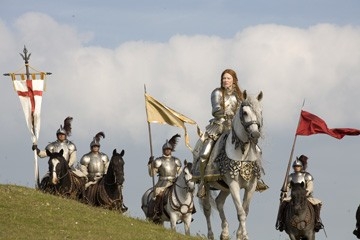In the 1558 Elizabed came to the throne like queen of England.
The queen promoted the Second Act of Supremacy for re established the Anglican Church in 1559, and proclamated herself supreme governor. She wanted to estebilish a truly national Curch, but Elizabeth find a middle way between Protestantism and Catholicism.
The queen wa called Virgin queen, in fact she never was married because at the Time marriage was only a contract between nation’s powers, in this way she protect her country from the domination of other powers.
Elizabeth represented the image of a great leader despite of she was a woman many thing that she did was for example to find a moderate way through the religious conflict Bute her major success came whit the defeat of the Spanish Armada in 1558, this episode had a strong political as well religious meaning, an argument between the Protestant English church and them catholic Spanish, and il the day that Piliph II sent to England the Invincible Armada, Elizabeth preferred to show herself as a first among equals.
1603 she was dead.
London was the center of political, religious and civil power in Elizabethan England, and also a city of entertainment, and going to the theater was one of the most typical pastimes of a Londoner.
Elizabethan theaters were very different from today’s theaters. Them were open-air structures and had the shape of a large amphitheater with a square stage. Theatrical performances were organized in the afternoons and the playwrights could only harness the power of daylight. Imagination and language play a fundamental role in theatrical productions since in an essentially ‘empty’ theater, they provide the audience with all the details about the setting and atmosphere of the shows.
An Elizabethan work was of mixed provenance and represented all social strata of Elizabethan society. Elizabethan spectators also went to the theater to meet other people, socialize, do business.
The people talked during the show, interacted with the actors, and even made explicit comments on the actions on stage, but women could not act on stage.
There are two characteristics that Elizabethan playwrights have derived from the dramatic tradition one is the mix of tragedy and comedy, which has led to the creation of “tragicomedy”.
For this reason in Elizabethan plays the main plot was always linked to one or more subplots, the action took place in many different places and the time frame was very fluid.
Vittoria Fusco, III C
